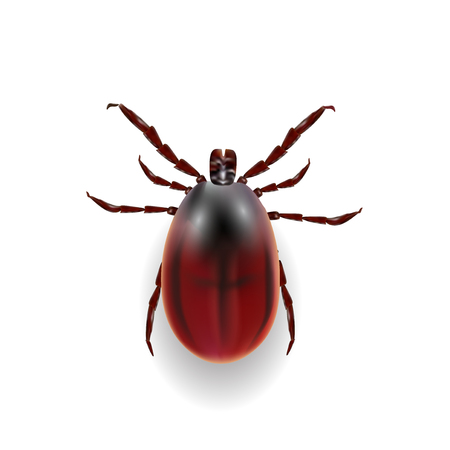Spotting Red Lily Beetle Presence in Your Garden
If you’re a keen gardener in the UK, there’s a fair chance you’ve encountered the troublesome red lily beetle. Recognising their presence early is half the battle when it comes to safeguarding your cherished lilies. These striking pests, known for their vivid scarlet shells, tend to make their appearance from late spring through summer—a period that coincides with prime lily growth. When inspecting your garden, keep an eye out for adult beetles basking on leaves or flower buds; they are easy to spot against the green foliage thanks to their bright colour and shiny wing cases.
However, it isn’t just the adults you need to watch for. Their larvae can be even more destructive and much harder to spot at first glance. Unlike their eye-catching parents, lily beetle larvae are small, plump, and dark—often covered in their own excrement, which makes them look like bird droppings. This clever disguise can easily fool even seasoned gardeners. Regularly check the undersides of leaves and along stems for these tell-tale signs, especially as temperatures begin to rise around April and May.
Don’t forget to look for physical evidence of damage too: ragged holes in leaves, nibbled flower buds, and droppings on foliage are classic indicators that red lily beetles or their grubs have made themselves at home. By staying vigilant and knowing what to look for during key times of the year, you’ll be far better equipped to deal with these persistent pests before they wreak havoc on your lilies.
2. Understanding the Red Lily Beetle’s Impact
If you’ve ever tended lilies or fritillaries in a British garden, you’ll know the dread that accompanies the first flash of scarlet on your precious plants. The red lily beetle (Lilioceris lilii) may look harmless, but these tiny invaders are notorious for the devastation they inflict on beloved floral displays across the UK. Their insatiable appetite targets native and cultivated lilies—such as Lilium regale, Lilium martagon, and even the dainty snake’s head fritillary (Fritillaria meleagris)—threatening both established borders and showy containers.
The damage begins with adult beetles feeding on leaves, stems, buds, and flowers, leaving behind ragged holes and unsightly notches. The real troublemakers, though, are their larvae. These grubs cover themselves in their own sticky black excrement as camouflage while voraciously skeletonising foliage. Left unchecked, an infestation can strip plants bare within weeks, leading to stunted growth or even death—a heartbreaking sight for any gardener investing years in nurturing their bulbs.
| Stage | Type of Damage | Visible Signs |
|---|---|---|
| Adult Beetle | Chews leaves, petals, and buds | Irregular holes; visible bright red beetles |
| Larvae | Skeletonises leaves; covers itself in black frass | Sticky black blobs on undersides of leaves; brown patches where tissue is missing |
| Pupa | No direct damage during this stage | Pupates in soil near plant base |
The impact is not just cosmetic. Regular attacks weaken plants, reduce flowering potential for subsequent years, and put local heritage varieties at risk—particularly those cherished by British gardeners for their history and resilience. Vigilance is essential: spotting early signs of damage can mean the difference between a thriving summer border and a sorry patch of ruined stems.

3. Hand-Picking and Manual Removal
When it comes to tackling red lily beetles in your garden, few techniques are as straightforward and effective as hand-picking. Many seasoned UK gardeners swear by this method, especially in smaller spaces or when infestations first appear. The trick lies in vigilance: make a habit of inspecting your lilies early in the morning or late in the evening when beetles are most active but still sluggish from cooler temperatures.
Spotting Beetles and Larvae
Begin by carefully examining both sides of each leaf, paying close attention to the undersides where adults and larvae often hide. Adults have a bright red shell and will often drop to the ground at the slightest disturbance, so approach quietly and cup your hand beneath the leaf to catch any escapees. The larvae, covered in their own black droppings as a clever disguise, can be found feeding on leaves and flower buds. Don’t be put off by their appearance—removing them is crucial for plant health.
Best Practices for Safe Removal
It’s wise to wear gloves, not only for hygiene but also because the beetles can emit an unpleasant odour when threatened. Gently pick off beetles and larvae by hand, dropping them straight into a container of soapy water. This ensures they cannot crawl out and prevents them from returning to your garden beds. Some gardeners use an old teaspoon or small stick to dislodge stubborn larvae without damaging delicate foliage.
Disposal Tips for UK Gardeners
Once collected, dispose of the pests responsibly. Pour the contents of your soapy water container onto bare earth away from planting areas or seal the pests in a bag before binning them with household waste—do not compost them, as eggs or larvae may survive and reinfest your garden. For those who prefer a more organic approach, chickens enjoy feasting on these beetles if you keep poultry at home.
This time-honoured method may require patience and persistence, but many British gardeners find that regular manual removal keeps red lily beetle populations well under control—especially when combined with other preventative tactics.
4. Safe and Effective Chemical Controls
When hand-picking and natural deterrents do not suffice, the careful use of chemical controls can help manage red lily beetle infestations. However, it’s crucial to choose pesticides that are approved for use in the UK, adhere strictly to label instructions, and always prioritise safety for people, pets, and beneficial insects.
Understanding UK Pesticide Regulations
In the UK, pesticide use is governed by strict regulations set by the Health and Safety Executive (HSE) and DEFRA. Gardeners must only use products that are authorised for amateur use and clearly labelled for treating ornamental plants like lilies. It is illegal to use professional-grade or unapproved substances in a domestic setting.
Choosing the Right Product
| Pesticide Type | Active Ingredient | Suitability | Notes |
|---|---|---|---|
| Contact insecticides | Deltamethrin, Pyrethrins | Effective against adult beetles and larvae; suitable for home gardens | Apply early morning/evening; avoid when pollinators are active |
| Organic options | Neem oil, Fatty acids | Safer for wildlife; less harmful to beneficial insects | May require repeated applications; best used at first sign of infestation |
| Systemic insecticides* | Imidacloprid** | Generally not available for amateur gardeners in UK due to environmental risks | Avoid unless specifically recommended and legally permitted |
*Always check product packaging for legal status.
**Imidacloprid is widely restricted due to its impact on bees and should not be used in home gardens.
Application Tips for Safety and Success
- Wear gloves and protective clothing: Always protect your skin and eyes during application.
- Avoid spraying on windy days: This reduces drift onto non-target plants and areas.
- Sparingly target affected plants: Only treat lilies showing signs of damage, rather than blanket-spraying your whole garden.
- Keep children and pets away: Until sprays have dried completely, ensure safety by restricting access.
- Dispose of containers responsibly: Follow local council guidelines for chemical disposal—never pour leftover pesticides down drains.
A Word on Environmental Considerations
The red lily beetle is persistent, but responsible chemical use minimises harm to pollinators like bees, as well as amphibians and birds visiting your garden. For peace of mind, opt for spot-treatments with short-residue products, and combine chemical methods with physical removal whenever possible. Remember: a balanced approach keeps both your lilies and the wider garden ecosystem thriving.
5. Cultural and Organic Prevention Strategies
If you’re keen to keep your lilies free from the dreaded red lily beetle without resorting to harsh chemicals, there’s a good old-fashioned way about it—a blend of traditional wisdom and organic know-how that many British gardeners have sworn by for years. Let’s take a look at some time-tested approaches to preventing those pesky beetles from making a return visit.
Natural Deterrents You Can Trust
Start with what Mother Nature provides. Neem oil, derived from the neem tree, is a favourite among organic gardeners and can be sprayed directly onto lily leaves. It disrupts the beetles’ lifecycle without harming beneficial insects when used properly. Another handy trick is sprinkling diatomaceous earth around the base of your plants. This natural powder works as a gentle barrier—harmless to us, but deadly to soft-bodied pests like larvae and adult beetles.
The Power of Companion Planting
Our grandparents often spoke of the value in planting certain flowers and herbs together, and there’s sound reason behind this wisdom. Consider interplanting lilies with strongly scented companions such as garlic, chives, or alliums. These aromatic allies help mask the scent of lilies, confusing red lily beetles and making your garden less inviting to them. Nasturtiums also serve as sacrificial plants, luring beetles away from your prized blooms.
Garden Hygiene Routines: A Gardener’s Best Friend
It might seem simple, but keeping your patch tidy is half the battle won. Regularly remove any fallen leaves or plant debris, as these can harbour overwintering beetles and their eggs. At the end of the growing season, dig lightly around your lilies to expose any hidden pupae to birds—a natural pest control if ever there was one. Don’t forget to rotate your lilies every few years if possible; moving them breaks up the life cycle of local beetle populations.
A Few Words From Experience
Having spent decades in British gardens both big and small, I can tell you that patience and consistency are your best tools here. These cultural and organic methods may require a bit more attention than chemical sprays, but they foster healthier soil and stronger plants in the long run—just as our forebears intended. Keep at it each season, and you’ll find that nature has a way of rewarding careful stewards.
6. Ongoing Vigilance and Community Wisdom
If there’s one thing a British gardener learns over the years, it’s that keeping lilies safe from red lily beetles is not just a one-off task but a regular commitment. Those bright red invaders have a way of popping up when least expected, so making a habit of checking your lilies—whether with your morning cuppa or during an evening stroll—is truly invaluable. Consistent vigilance means spotting trouble early before it gets out of hand. But don’t keep your findings to yourself; the real strength lies in sharing experiences with neighbours and fellow gardeners. A quick chat over the fence or a post in your local gardening group can reveal if others are seeing beetles too, and you might pick up a tip or two that makes all the difference. The wisdom passed down through generations—like using an old jam jar to collect beetles or sharing a homemade spray recipe—can be just as effective as anything you’ll find in a book or online. Remember, gardening in Britain is as much about community as it is about plants. When we pool our knowledge, everyone’s gardens benefit and those pesky red lily beetles stand less of a chance. So, keep checking, keep talking, and together let’s keep our lilies thriving for another season.


